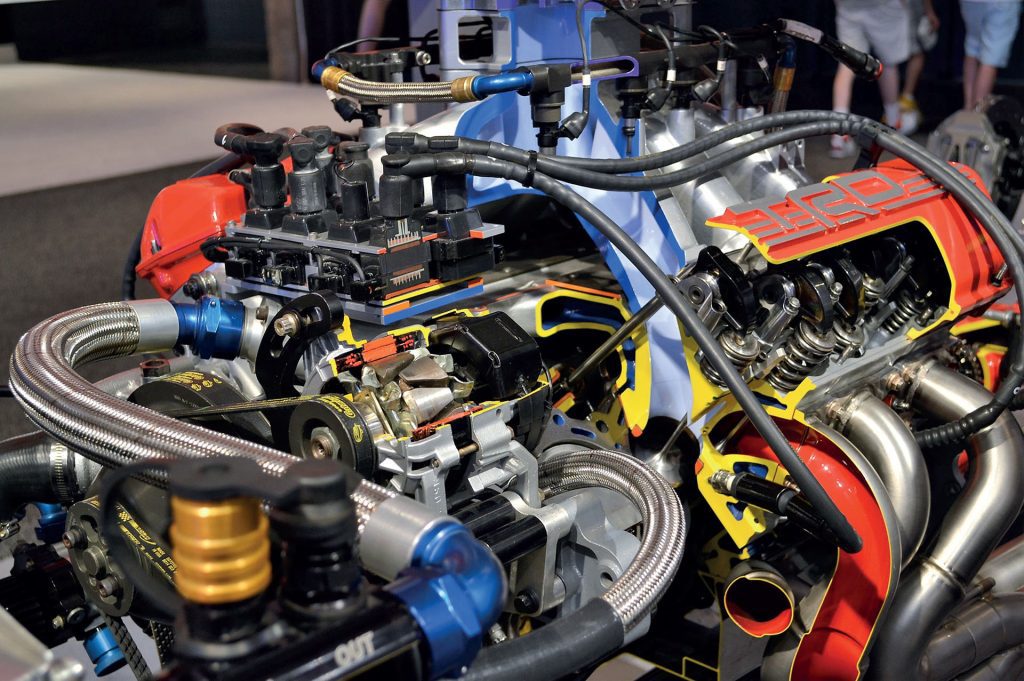If you’re shipping an engine, it is important to drain it of all fluids before the shipment. This includes motor oil, coolant, and water. If there is any fluid left, the carrier will not pick up the freight and you may incur additional charges.
Engines are typically shipped as Less-Than-Truckload freight, which means they will share a truck with other shipments. This is often the most cost-effective way to how to ship an engine.
1. Drain all fluids
Engines and motors are heavy and bulky items that must be transported on trucks, planes, or ships to reach their destinations. The journey can take one to 14 days, depending on the distance, weather conditions, and the method of transport.
When shipping engines, it is essential to drain all fluids before packing. This is because any leaking liquids can damage the packaging materials and make the engine more susceptible to jolts and bumps during transportation. Moreover, leaking liquids can be dangerous to the driver and other passengers.
Draining fluids also makes the shipment lighter and easier to handle, and it helps reduce the cost of transportation. In addition, it is important to line the area where you are draining the fluids with absorbent material so that the excess liquid doesn’t spill. Also, the fluid intakes must be easily accessible so that the carrier can check them with a dipstick.
2. Secure the engine in a crate or pallet
Engines are heavy and bulky, and they need to be secured properly before the freight courier picks it up. A crate is a good option, but even just a sturdy pallet will do if it’s securely fixed to the rest of the freight and firmly packed with cardboard or packing foam. Ratchet straps are the best option, but durable rope can also be used.
Depending on the type of engine, it may be easier to use a truck terminal for pickup instead of your home or business. This will help to avoid residential delivery fees and potentially save you money on the shipment cost. It’s a good idea to ask your freight carrier about this option when you get your shipping quote. They should be able to tell you which terminal is closest to your location and give you the details of how to prepare the shipment for pickup at the truck terminal.
3. Wrap the engine
It’s important to wrap the engine to protect it during transit. Use cardboard to cover the sides and tops of the engine, and secure them with straps or durable twine. This will help prevent any liquids from seeping out during transit, and it will also keep the engine from shifting during transport.
When wrapping the engine, be sure to leave an access point for the fluid intakes. Otherwise, the carrier may be unable to inspect the engine’s oil levels when it arrives at collection. This can cause delays and reroutes, which can impact the overall cost of shipping an engine. To avoid this, it is best to ask a professional to drain and wrap your engine for you. They can also advise on any other steps you might need to take to prepare your engine for shipment.
4. Place the engine on the pallet
Engines are bulky, heavy, and irregularly shaped, which can make them difficult to ship. However, there are ways to ship engines safely and quickly using LTL freight (less-than-truckload) shipping. This method is cheaper than full truckload shipping and provides a sturdy base for transporting your engine.
Place your engine on a pallet, making sure to secure it well. Use metal banding, straps, chains, or strong ratchet straps to secure the engine. If possible, try to center your engine on the pallet and leave at least four inches of space around it. This will help prevent shifting during transit.
Once your engine is securely on the pallet, cover it with cardboard or moving blankets and then shrink wrap it. Be sure to leave access to the fluid intakes so the carrier can check the dipsticks and ensure that all fluids have been drained. This will help avoid delays during transit and protect the engine from damage.
5. Label the pallet
If you’re shipping an engine, it is important to properly label the pallet. This will ensure that the freight gets delivered to the correct recipient and prevents any confusion in transit. Be sure to include the full name of the recipient, as well as the address and phone number of both the shipper and the receiver. Also, be sure to detail any hazards associated with the shipment so that the driver can take appropriate precautions during handling and stowage.
One of the most important things to remember when shipping an engine is to drain all fluids. This is critical because most carriers will not pick up a load that still has fluid in it. Additionally, it is a good idea to line the container with absorbent material. This will help soak any liquid that may leak during transport and protect other freight in the truck.
6. Place the engine on the truck
Many people are hesitant to ship engines because they are heavy, bulky, and can contain hazardous fluids. However, engines are actually one of the most common freight shipments. With a little know-how, you can have your engine shipped safely and at an affordable price.
Before you start the shipping process, it is important to drain all fluids from your engine. This will reduce the risk of it leaking or damaging other shipments during transport. It will also make the engine lighter and easier to handle.
Another important step is to secure your engine on a pallet. This can be done with steel strapping, industrial plastic straps, chains, or durable ratchet straps. Then, wrap it in shrink wrap to protect it during transit. Be sure to include the type and model of the engine on your bill of lading. This will help prevent a potential reclassification or reweigh.


